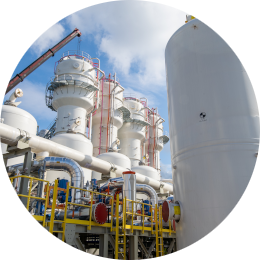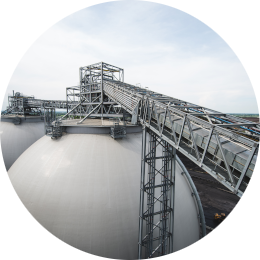Essential tools On a path to net-zero
The lifetime of production assets in the steel sector can span decades. Technologies that capture, utilize, and store carbon emissions (CCUS) are therefore essential tools for any plausible path toward net-zero 2050. As a part of Mitsubishi Heavy Industries Group and a network of pioneers in the field, Primetals Technologies is the ideal partner for metals producers looking to reduce their emissions in this way.
Gas Fermentation
Using our expertise in biological gas fermentation, we designed a process that allows valuable products to be made from waste gases in the iron and steel industry. Unique naturally occurring biocatalysts capture and convert carbon-rich metallurgical waste gases into ethanol. This ethanol can be used for fuels, including as a feedstock for sustainable aviation fuel and can also be used to produce textiles, packaging, and other everyday products, that would otherwise come from virgin fossil resources.
Gas fermentation technology enables a steel plant to reduce emissions and pollutants at source and embrace a circular carbon economy by locking that waste carbon into new products. An attractive and scalable solution, the first European gas fermentation plant – located at ArcelorMittal Gent steelworks – will be commissioned in 2022.

Kansai Mitsubishi Carbon Dioxide Recovery Process (KM CDR Process™)
In addition to the reduction of carbon use, an important technology will be carbon capture and usage. The CO2 capture technology from Mitsubishi Heavy Industries is known as the KM CDR Process™. This amine-based CO2 capture process uses a newly developed solvent known as KS-21. The CO2 capture system will recover 95 percent of the CO2 from flue gas and compress and treat it to adequate pipeline conditions. (Image courtesy of Drax)

